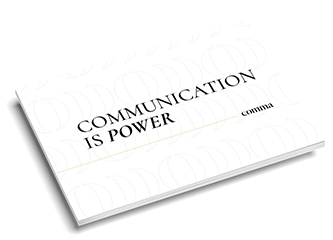UGC stands for ‘User Generated Content’. UGC refers to any type of content created by users of a platform online, such as a website, app or social network. This can include text, images, videos, comments, reviews and other types of content that these individuals create and share with other users;
UGC is a way for users to become content creators rather than just consumers; These people can share their opinions, experiences and perspectives, which can enrich the experience of other participants on the platform;
The relevance of UGC in marketing and advertising
UGC is especially relevant in the context of marketing and advertising, as user-generated content is seen as more authentic and trustworthy than content created by brands. Companies can use UGC to engage potential consumers with their brand and to create a community around their products or services;
However, it is important to note that UGC can also pose challenges in terms of moderation and content management; It is important to ensure that user-generated content complies with the platform’s policies and does not infringe the intellectual property rights or privacy of others;
What is the origin of UGC?
The origin of user-generated content dates back to the emergence of web 2.0 in the early 2000s. Web 2.0 allowed users to interact with online content in a more active and participatory way, in contrast to Web 1.0 where users were mainly passive recipients of information;
The popularisation of tools such as blogs, wikis and social networks allowed users to create and share content in a more accessible and widespread way;
As social networks such as Facebook, Twitter and Instagram became more popular in the 2010s, user-generated content became a fundamental part of the online. Users started sharing their photos, videos and thoughts in real time, and brands and businesses began to leverage this content to reach their audiences more effectively;
Advantages of UGC

UGC can be beneficial to brands and businesses in a variety of ways, from increasing trust and credibility to improving search engine visibility. By allowing users to participate and generate content, brands can encourage participation, create a community around the brand and build engagement and loyalty; Its main advantages are:
It increases confidence and credibility;
Consumers trust the opinions and experiences of other consumers more than they trust a brand’s advertising; UGC, such as reviews and ratings, can provide potential buyers with valuable and authentic information about a product or service, which can influence their purchasing decision;
It generates commitment and loyalty
users who interact with a website or application more actively, i.e. those who generate content, tend to feel a greater sense of ownership and engagement with the brand; In addition, by allowing users to share their opinions and experiences, participation is encouraged and a community can be created around the brand;
Improve SEO and search engine visibility
UGC can help improve visibility in the search results of Google and other search engines, as search engines value user-generated content; In addition, UGC can generate relevant and up-to-date content for the website or application, which can improve search engine rankings;
Save time and resources;
By allowing users to generate content, content production costs and the workload for the marketing and communication team can be reduced; In addition, UGC can be an effective way to generate fresh and authentic content on an ongoing basis;
Common examples of UGC
- Product reviews and comments on e-commerce websites such as Amazon, eBay or Etsy;
- Posts and photos on social networks such as Facebook, Instagram or Twitter;
- Videos uploaded to platforms such as YouTube, Instagram orTikTok.
- Blog posts and online discussion forums;
- Answers to questions or comments on technical support websites and forums;
- Opinions and reviews of films, books, music and other entertainment on websites such as Rotten Tomatoes or Goodreads;
- User-generated content in online games, such as comments and feedback, customised avatars and player-created levels;
- Photos and videos tagged with a specific hashtag on Instagram and Twitter, which can be shared in a gallery or live wall;
What are the differences between UGC and influencer marketing?
User-generated content (UGC) and marketing of influencers have in common that both are digital marketing strategies that seek to increase the reach and credibility of a brand or product through the use of online influencers.
Both UGC and influencersare based on the idea that recommendations from friends, family or influencers are more effective in attracting and keeping consumers’ attention than traditional advertising techniques.
In addition, both approaches also seek to encourage greater user interaction and engagement online, which can increase consumer loyalty and commitment to a brand or product;
- There are, however, some important differences between UGC and influencermarketing. While UGC focuses on creating user-generated content, influencers involves the use of online influencers to promote a specific product or brand.
- On the other hand, influencers often involves financial or in-kind retribution for influencers, while UGC can be created by users without receiving direct reward for it.
UGC strategies

To develop an effective user-generated content strategy, there are some key considerations to keep in mind; Here are some steps to follow in order to create a UGC strategy:
Define your objectives;
Before you start, you need to be clear about what you want to achieve with your UGC strategy; Are you looking to increase the visibility of your brand? Do you want to improve the interaction of your users on your website or application? do you want to increase the trust and credibility of your products or services? By having clear objectives, you will be able to develop a more effective strategy and measure the success of your campaign;
Identify your audience and platform
It is important to know your audience and which online platform they prefer to interact on; For example, if your audience is mainly young and active on social media, you may want to focus on Instagram or TikTok; If your audience is more professional, LinkedIn or a specialised forum platform may be more effective;
Create incentives;
One of the most effective ways to encourage user participation is to offer incentives; You can offer discounts, prizes or the opportunity to be featured on your website or social media; Make sure the incentives are relevant and attractive to your audience;
Encourages creativity;
To get the best user-generated content, it is important to encourage creativity and originality; Provide users with clear but flexible guidelines on the type of content you want, and make sure you give them enough freedom to express themselves;
Monitor and moderate content
It is important to monitor and moderate user-generated content to ensure that it complies with the platform’s policies and does not infringe the intellectual property rights or privacy of others; Also, be sure to respond to any comments or questions from users in a timely and professional manner;
Spread the content
Once you have user-generated content, it is important to disseminate it through your social media, website and other channels; This will help increase the visibility of your brand and encourage other users to generate content;
In short, an effective user-generated content strategy requires clear objectives, an understanding of your audience and platform, attractive incentives, creativity, moderation and promotion of content; By following these steps, you can develop an effective UGC strategy that encourages user engagement and increases the visibility of your brand;
How do brands use user-generated content?
Brands use User Generated Content (UGC) in a variety of ways to connect with their audience and create greater interaction with their customers. For example:
- Coca-Cola: the beverage company has used UGC to create advertising campaigns with photos and videos of people enjoying its product. In its “Share a Coke” campaign, for example, it invited consumers to share photos with personalised Coke bottles bearing their name;
- GoPro: action camera brand GoPro has built a large community around UGC, encouraging its users to share their videos and photos using its products. GoPro regularly shares content from its users on its social networks and website;
- Starbucks: the famous coffee shop chain has used UGC to create a campaign called “White Cup Contest”, in which it encouraged customers to decorate their white coffee cups and submit their designs. The campaign generated over 4,000 entries and the winner had her design printed on a limited edition Starbucks cup;
- Airbnb: the accommodation platform has used UGC to create a video series called “Airbnb Stories”, which recounts travellers’ experiences in accommodation on the platform. The videos include interviews with guests and shots of the accommodation and its surroundings;
- Apple: the tech brand has used UGC in its “Shot on iPhone” campaign, in which it shared photos taken by iPhone users around the world. The campaign was a great success and helped position Apple as a quality brand in mobile photography;
Some recommended books on UGC
There are numerous publications that have dealt extensively with user-generated content; Among all of them, we highlight:
- “User Generated Content and its Impact on Branding: How Users and Communities Create and Manage Brands in Social Media” de Raoul Kübler y Andreas Krämer (2014). This book explores the impact of UGC on branding and how users and communities create and manage brands on social media;
- “The Handbook of Online and Social Media Research: Tools and Techniques for Market Researchers” de Ray Poynter y Neil Saunders (2010). This book provides a practical guide on how to use UGC and other online research techniques for the investigation of
- “User-Generated Content and Its Impact on Branding: How Consumers and Communities Create and Manage Brands in Social Media”, de Raoul Kübler (2017). In this book, the author examines how consumers and communities create and manage brands in social networks;
- “Content Marketing” by Eva Sanagustín (2016): This book addresses content marketing as a strategy to connect with consumers and build loyalty; It talks about user generated content as a fundamental tool to achieve this goal;
- “Brandoffon: The New Age of Branding” by Andy Stalman (2016): In this book, Stalman reflects on the importance of building strong, authentic brands in the digital age; User generated content is one of the key elements addressed in the book to achieve this goal;
- “Digital Marketing in the Age of Google” by Enrique Burgos (2018): This book provides an overview of digital marketing and how it has changed with the advent of Google. The author devotes an entire chapter to user generated content and its impact on digital marketing;
Recommended videos on user-generated content
On social media we can also find many video examples of the importance of user generated content today. We found them interesting:
“How is user-generated content treated in AdSense?
Published on the YouTube channel of Google AdSense. In it, Chris from Google AdSense talks about how AdSense policies for user-generated content are handled and how brands can ensure they comply with these policies to stay in good standing with AdSense;
“How to use user-generated content for business”;
Published on the YouTube channel of Hubspot. The video explores how UGC can be a powerful tool to drive business growth and revenue; The presenter begins by explaining what UGC is and why it is important, and then provides some successful examples of brands that have used it in their marketing campaigns;
“UGC: What is user generated content and why you should include it in your strategy”
Published by social media management and analysis platformMetricool. The video shows real examples of brands that have used UGC effectively and explains how to implement such a campaign;






